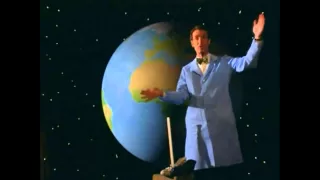I think I wanted to talk about Isometries just because I like the word so much. It's one I've never heard before and it rolls of the tongue so poetically!
I actually feel like Shakespeare when I say it--Oh, I know why--iambic pentameter, another phrase I like the sound of!
Iso means "equal" and Meter means "measure," so it makes sense that isometries would mean equal measure when applied to movement of a shape on a plane. There are three kind of isometries I learned about: Reflections, Rotations, and Translations.
Reflections (or flips) are exactly what you would think. A reflected object appears just as if it has been reflected in a mirror. The reflected object is the exact same distance from the line of reflection as the original, but it appears mirrored. This concept is a bit difficult to describe with words and deserves a visual example:
In the above image, quadrilateral ABCD is reflected about line x=3. You can see that A'B'C'D' is the mirror image of the original figure and every point is the exact same distance from from the line of reflection, only in the opposite direction.
Rotations are also know as turns. The shape is rotated around a single point a certain number of degrees.
In the above image, the quadrilateral ABCD is rotated around point B 180 degrees. It is as if I picked up and turned the original figure, but kept the shape joined to the grid at point B. The resulting figure A'B'C'D' is a 180 degree turn from its original location.
Translations are also known as slides. In a translation, the shape is moved on the plane a certain distance, but the shape appears exactly the same, only in a different place
In this image, quadrilateral ABCD is translated along vector u. A'B'C'D' is the exact same shape and orientation, it has just been shifted left and a bit down in order to form A'B'C'D'.
Here's a bit more you can do with rotations, reflections, and translations--check out
Ms. Pac-man!






